Author: Malcolm Frazer
Through thousands of years of human ingenuity, we’ve learned how to form raw materials of nature into a consumable that tastes as good as it makes us feel. It’s pretty incredible to consider the path brewing and beer has taken to land where it has today, from the discovery of malting and mashing to the breeding of hops with specific desirable characteristics and the isolation of particular strains of yeast. All of this knowledge formed over years of experimentation that ultimately led to the formation of methods known to consistently produce a quality product.
Indeed, brewing is steeped in tradition, many of the methods developed as a means of accomplishing a specific goal due to limitations in ingredients, equipment, or even knowledge. One such method developed in the early days of organized brewing by German brewers is the 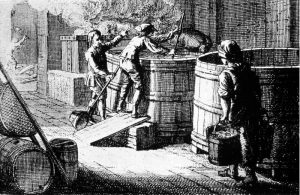 decoction mash, which was initially intended to combat effects of lower modification of malts as well as a way to overcome limitations on temperature monitoring and control existing at the time.
decoction mash, which was initially intended to combat effects of lower modification of malts as well as a way to overcome limitations on temperature monitoring and control existing at the time.
Put simply, decoction mashing is a method for increasing the temperature of the mash in a series of steps that involves removing portions of the mash, boiling it, then returning it back to the main mash. In addition to increased efficiency with malts of lower modification, brewers began to rely on decoction mashing to impart what they believed to be unique character to their beer.
While some have written decoction off as a remnant of our less advanced brewing past, others continue to employ the time consuming procedure convinced it has a positive impact on their beer. Having performed many decoctions myself, I was excited to finally test this one out!
| PURPOSE |
To evaluate the differences between a German Pilsner made using a triple decoction method and a beer of the same recipe made with a single infusion mash.
| METHODS |
While deciding what style of beer to make for this xBmt, I tapped some lager brewing friends to see what they thought might best showcase the effects of a triple decoction. I received a few different suggestions and ultimately settled on German Pilsner, as I felt its simplicity would lead to less obfuscation of whatever impact the decoction process might have.
A Certain… Ich Weiß Nicht Was
Recipe Details
| Batch Size | Boil Time | IBU | SRM | Est. OG | Est. FG | ABV |
|---|---|---|---|---|---|---|
| 5.6 gal | 70 min | 41.3 IBUs | 3.8 SRM | 1.052 | 1.017 | 4.6 % |
| Actuals | 1.052 | 1.009 | 5.6 % | |||
Fermentables
| Name | Amount | % |
|---|---|---|
| Pilsner (2 Row) Ger | 10.25 lbs | 91.62 |
| CARAHELL® | 9 oz | 5.03 |
| Acid Malt | 6 oz | 3.35 |
Hops
| Name | Amount | Time | Use | Form | Alpha % |
|---|---|---|---|---|---|
| Saaz | 42 g | 70 min | Boil | Pellet | 6.4 |
| Hallertauer | 14 g | 60 min | Boil | Pellet | 4.1 |
| Hallertauer Hersbrucker | 14 g | 30 min | Boil | Pellet | 2.3 |
| Hallertauer Hersbrucker | 28 g | 5 min | Boil | Pellet | 2.3 |
Yeast
| Name | Lab | Attenuation | Temperature |
|---|---|---|---|
| German Bock Lager -Slurry for 400 Billion (WLP833) | White Labs | 73% | 48°F - 55°F |
Mash
| Step | Temperature | Time |
|---|---|---|
| Dough-In/ Protein Rest | 133°F | 10 min |
| Dextrinization Rest | 148°F | 30 min |
| 2nd Saccharification Step | 158°F | 30 min |
| Mash Out | 171°F | 10 min |
Notes
| Water Profile: Ca 70 | Mg 16 | Na 36 | SO4 111 | Cl 67 | HCO3 81 | pH 5.3 |
Download
| Download this recipe's BeerXML file |
Fortunate enough to have friends in the brewing industry, I scored a massive pitch of WLP833 German Bock Lager yeast slurry from Helicon Brewing the morning of my brew day, thus starters were unnecessary. After gathering the liquor for both batches and adjusting their profiles with minerals, I weighed out and milled separate sets of the same grain with the help of my loyal brewing assistant, Mollie the Masher.
Since the decoction method involves a bit more physical and mental effort than my standard single infusion approach, I decided to get it going first. While some brewers opt for a lower temperature dough-in and acid rest, I decided to forgo this step to avoid any possible impact on pH caused by phytic acid. I relied on BeerSmith to determine the strike temperature required to hit the initial rest temperature of 133°F/55°C.

I referred to a modified version of the Hochkurz decoction method discussed by Kai Troester to determine the volumes of mash to remove for each decoction in order to hit each step temperature. This method involves drawing off slightly more thick mash than some calculators recommend, the added mass ensuring target rest temperatures are hit, then adding back only enough of the boiled mash to hit the target step temperature; any leftover mash either remains in the kettle until the next decoction or, assuming a long enough rest, can be added back to the main mash once the temperatures match.
Immediately after mashing in, I pulled off approximately 30% of the thick mash, placed it in another kettle, and brought it to a rolling boil. The main mash was left at protein rest for approximately 10 minutes.
The first decoction was boiled, then I added enough back to the main mash to achieve the second rest temperature of 148°F/64°C.
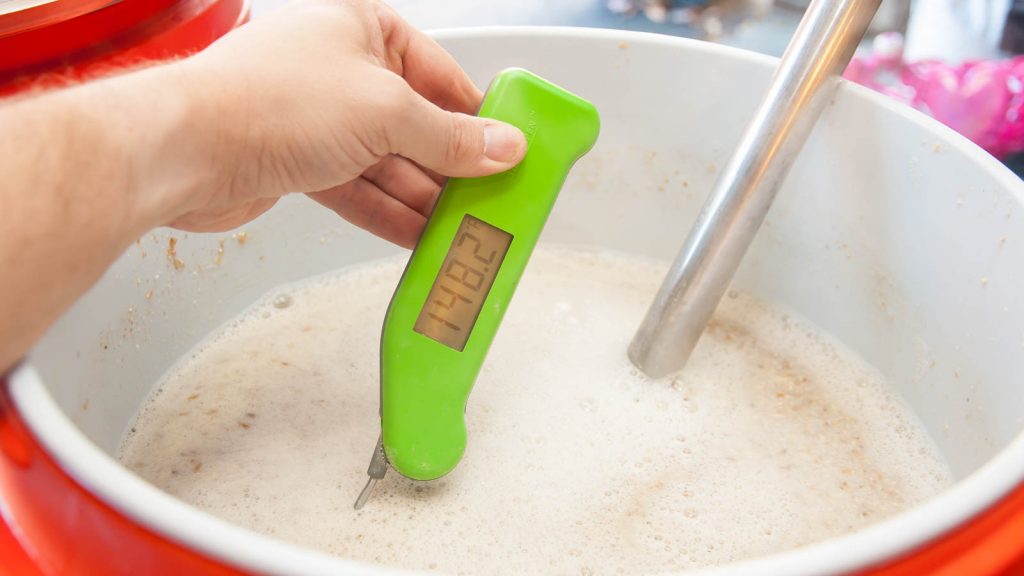
After another brief pause, I moved a similarly sized portion of thick mash to the decoction kettle, raised the temperature to a boil and boiled it for 15 minutes for a total of 30 minutes for this rest.
Adding this boiling mash back to the main mash brought the temperature up to 158˚F/70˚C, where it sat for 30 minutes.

It was around this point I mashed in on the single infusion batch to hit my target saccharification temperature. Easy mode!
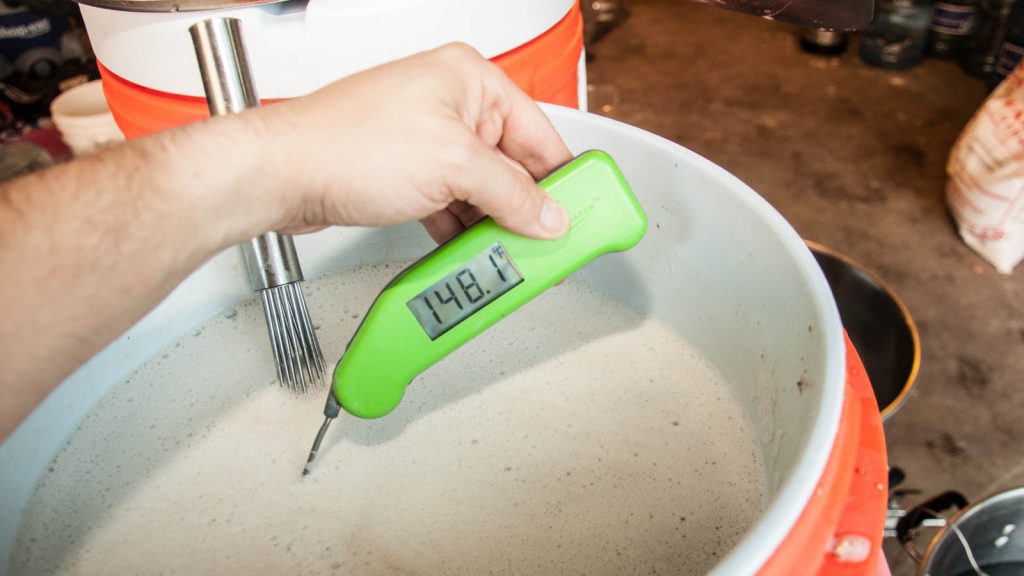
While the single infusion was left alone for a 1 hour rest, I pulled a third and final decoction, boiled it for 15 minutes, then added it back to the main mash, which raised it to a mash-out temperature of 171˚F/77˚C.
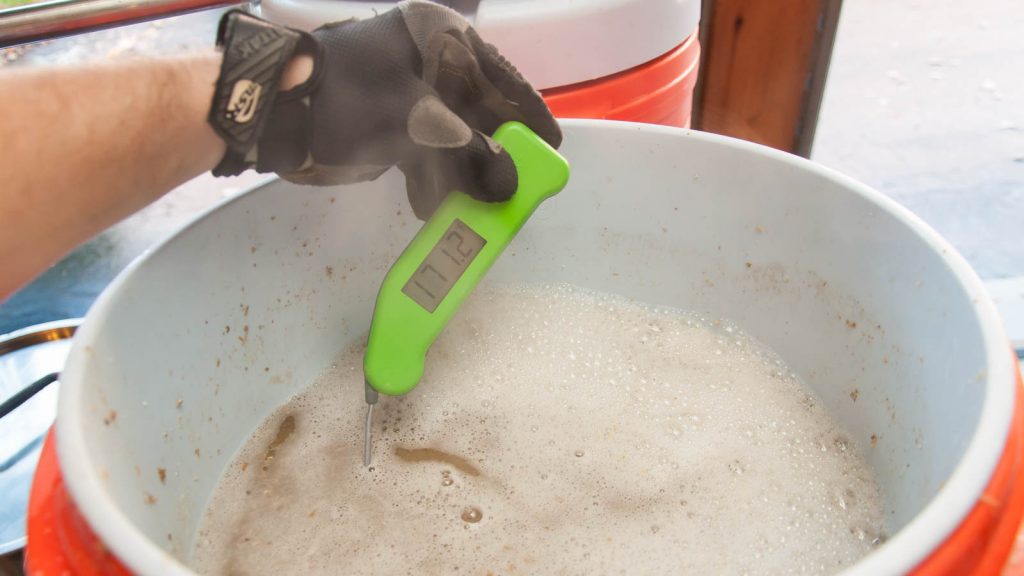
Mash pH readings were taken for both batches along the way and were different, though not by as much as I might have assumed.
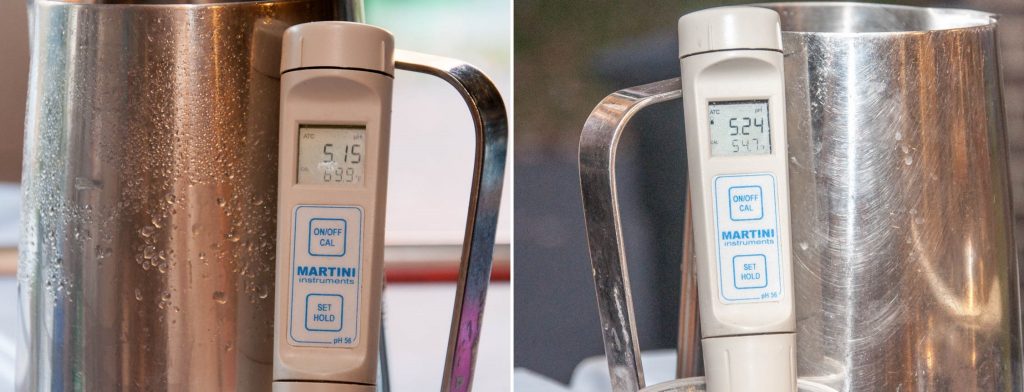
After collecting the first runnings from both batches, I noticed the decoction batch had slightly less volume than the infusion batch, likely due to evaporation during each decoction step. Having previously consulted with the crew regarding how to address this issue, we decided for this initial xBmt to use just enough extra water during the sparge to the decoction batch to bring it to the same pre-boil volume as the infusion batch, our reasoning being to ensure any differences weren’t due to evaporation but rather the boiling of the mash. I added a smidge over 1 liter of water to the decoction wort and proceeded to boil both for 70 minutes with hops added at the times listed in the recipe.
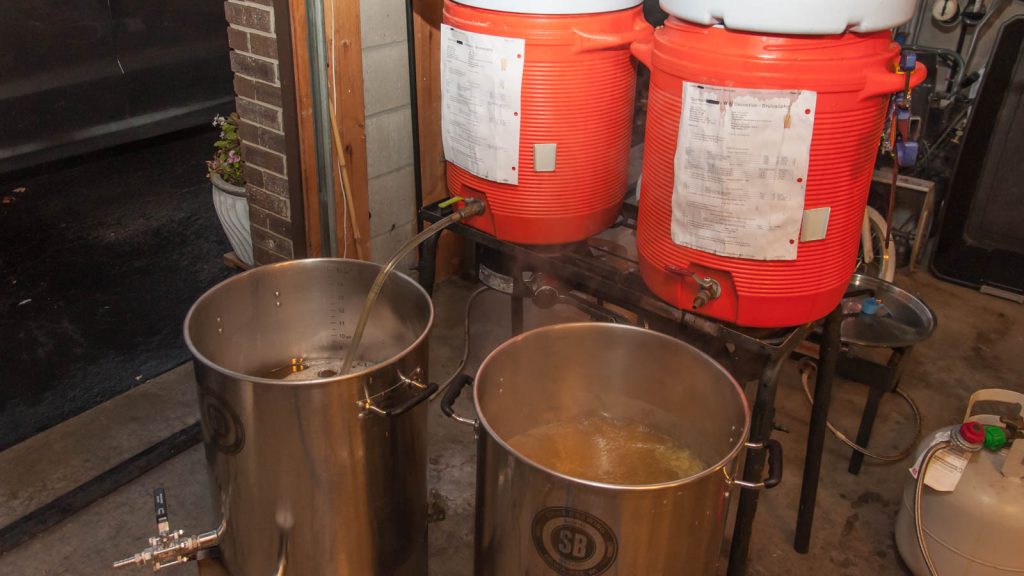
The worts were quickly chilled at the completion of the boil and I took hydrometer measurements showing a very small difference between the batches.
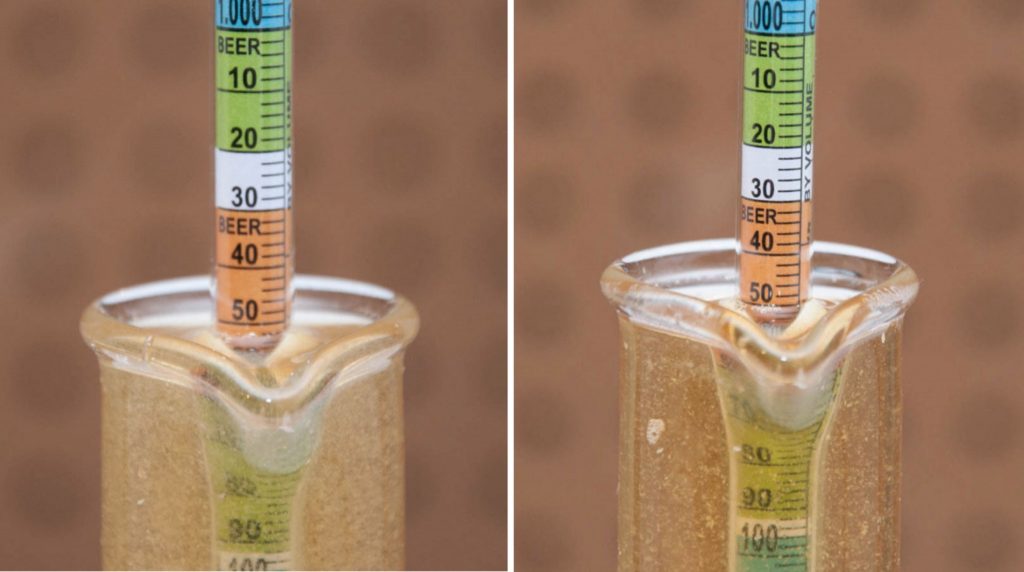
I pulled off a few ounces of each wort for a better color comparison at this point.
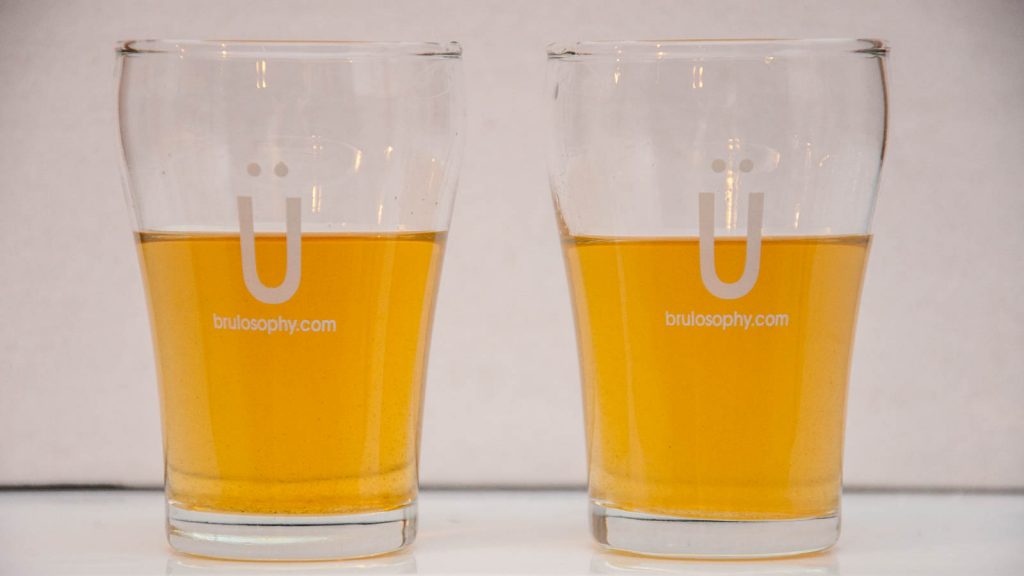
Two marked fermentors were then filled with the same volume of wort from each batch then I let them finish cooling to my target pitching temperature of 48˚F/9˚C.

Once the temperatures were stable, I pitched even amounts of fresh WLP833 German Bock Lager yeast slurry into each.
I then set both fermentors to maintain a fermentation temperature of 50˚F/10˚C and decided to employ a more traditional lager fermentation method– each batch was held at 50˚F/10˚C until they were within 0.004 SG of the expected FG, after which I raised the temperature of each fermentor to 54˚F/12˚C to encourage complete attentuation, leaving them until FG was reached and no off-flavors were detected. Judging by airlock activity, both beers started fermenting around the same time and appeared to continue with similar vigor throughout. The beers fermented 11 days at 50˚F/10˚C and 3 additional days at 54˚F/12˚C before I pulled hydrometer samples confirming FG had been reached.

At this point, I dumped the trub and chilled the beers in their fermentors down to 40˚F/4˚C where they lagered for 12 more days before I proceeded with kegging them under pressure.
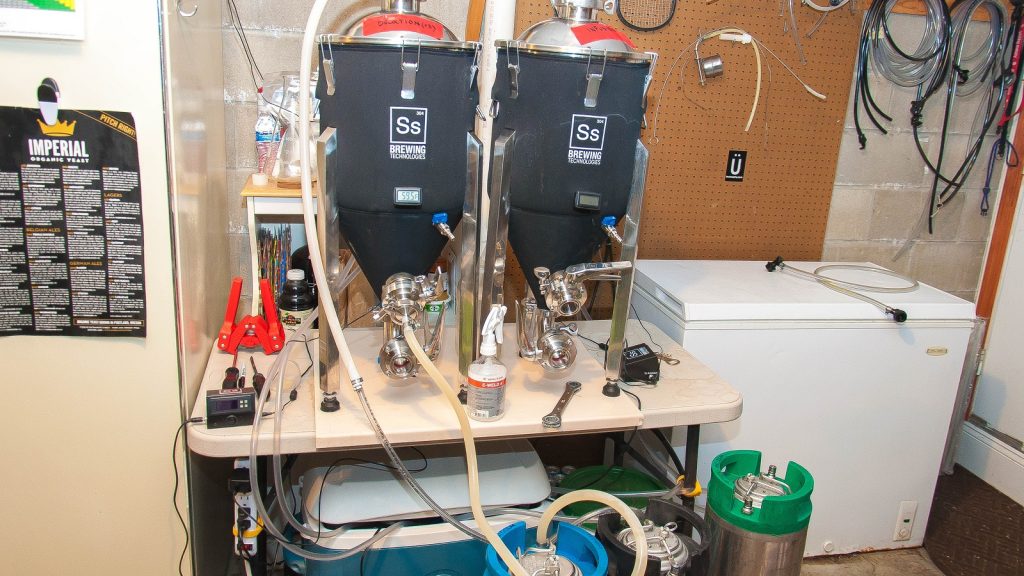
The filled kegs were placed in my keezer and hit with 40 psi of CO2 overnight prior to being purged and set to serving pressure of 12 psi where they remained the following week. When it came time to collect data, the beers were both perfectly carbonated and clear.
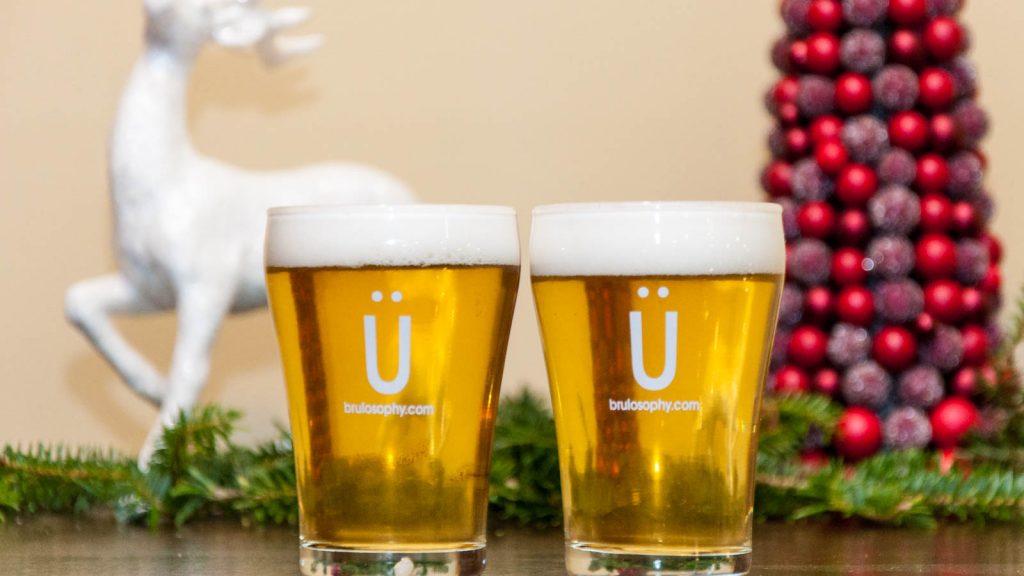
| RESULTS |
A panel of 33 people with varying levels experience participated in this xBmt. Each blind taster was served 2 samples of the single infusion beer and 1 sample of the triple decoction beer in differently colored opaque cups then instructed to select the unique sample. At this sample size, 17 tasters (p<0.05) would have had to accurately select the unique sample to achieve statistical significance. Ultimately, 15 tasters (p=0.10) chose the different beer, suggesting participants were not able to reliably distinguish a German Pils made using a triple decoction method from the same beer made using a single infusion batch sparge method.
Some readers have questioned whether blindness to the xBmt variable may be the reason participants are unable to detect differences between the samples, that perhaps by knowing what the test is about, they’d be able to focus more on meaningful aspects of the beer and thus increase their odds of correctly choosing the unique sample in the triangle test. While it goes against accepted sensory analysis practices, to satiate the curious, we decided to analyze how “sightedness” effects performance and administered the triangle test to a group of 22 new participants after informing them of the variable; they were not made aware of which beer was the unique sample, just that two German Pilsners were made using either a triple decoction or single infusion. In order to reach statistical significance, 12 tasters (p<0.05) would have had to correctly identify the unique sample, though only 8 (p=0.46) were able to do so, which not only confirms the non-significant blind data, but suggests one’s ability to distinguish between the samples may not be heavily influenced by knowledge of the variable.
Given the non-significant results, any further data collected is meaningless, as the findings don’t support the notion that triple decoction made a statistically distinguishable difference. But given the variable in question, we thought it’d be interesting to share preference data of only those who were correct on the initial triangle test. Please interpret with caution. The participants who correctly selected the decoction sample as being unique in the triangle test were instructed to complete a brief preference survey comparing only the two different samples while still blind to the variable. Of the 15 blind tasters who were correct, 4 preferred the triple decoction beer, 7 reported preferring the single infusion beer, and 2 said they perceived a difference but had no specific preference. Interestingly, 2 of the correct tasters admitted to perceiving no difference between the beers, suggesting the possibility their correct selections were simply a lucky guesses. Out of the 8 correct sighted participants, 5 preferred the triple decoction beer, 2 preferred the single infusion beer, and 1 person said they perceived no difference.
Purely for the sake of curiosity, we combined the blind and sighted data for analysis. With a total of 55 participants, 25 correct responses (p<0.05) would be required to achieve statistical significance, though only 23 tasters (p=0.12) correctly identified the unique sample, again failing to support the hypothesis that triple decoction produces a noticeable difference compared to single infusion.
My Impressions: I began sampling these beers prior to collecting data and believed from early on there was little chance tasters would be able to tell them apart, despite the rather radically different mashing regimen. I was admittedly in disbelief. I perceived the decoction beer as possessing a slightly stronger malt character with a hint more sweetness compared to the single infusion sample, which appeared to maintain a touch more haze. The difference was so subtle that I’m convinced I wouldn’t have noticed them had I not been searching for them so intently. After a few more days in the keg, around the time data was collected, whatever differences were present before seemed to become more noticeable to me, as I went 5 for 5 on various versions of semi-bind triangle tests, albeit none of which I felt very confident about. I was genuinely surprised when I was correct the the first 2 times, though in subsequent attempts, I knew exactly what to look for and was able to reliably detect the decoction beer- mother’s (brewers’s) intuition.
| DISCUSSION |
I’ve utilized different decoction methods many times over the years with the belief it resulted in beer with a richer malt character that simply couldn’t be had by a single infusion mash. This belief was consistently confirmed by my experiences with the decocted beers I made, as I always perceived them as possessing the sought after character decoction is said to impart. Acknowledging that confirmation bias could be at play, though hesitant to accept what I perceived was all in my head, I approached this xBmt fully anticipating a significant finding. Then I started sampling the beers for myself and was blown away by how incredibly similar they were, to the point I would have been surprised if the results were significant. All of this left me with more questions than answers. Is it possible the lauded decoction character is more a function of concentrated wort than actual cooking of the mash? Would the decoction beer have tasted different if I’d used a notably undermodified base malt? Where the hell was the melanoidin flavors I’d sworn I tasted in previous decoction beers?
I’m constantly left amused by participants’ preference ratings, not just because it demonstrates that certain methods, even when they do result in a noticeable difference, may not produce the most desirable outcome for some. The fact significance was not reached in this xBmt could mean the preference ratings were simply random picks, though it’s also possible those who were correct actually did perceive a difference and the majority just happened to like the single infusion beer more. Either way, this data reminds me that “what I like” may not require the methods espoused by others, but those that I’ve found produce the most satisfactory results for me.
It should go without saying these xBmt results do not “prove” decoction has no perceptible impact on beer, despite the fact participants were unable to reliably distinguish a decocted German Pils from one made using a single infusion batch sparge method. Of course, it’s likely some will rely on these results to confirm an already held belief, which as unavoidable as this is, we strongly recommend against. Considering the shear number of respected brewers who utilize decoction methods, a single data point such as this certainly is nowhere near enough to invalidate the practice. This case is obviously not closed and our hope is that these findings motivate further exploration of this interesting traditional method.
If you have experience with decoction methods or thoughts on the matter, please share in the comments section below!
Support Brülosophy In Style!
All designs are available in various colors and sizes on Amazon!
Follow Brülosophy on:
FACEBOOK | TWITTER | INSTAGRAM
If you enjoy this stuff and feel compelled to support Brulosophy.com, please check out the Support Us page for details on how you can very easily do so. Thanks!


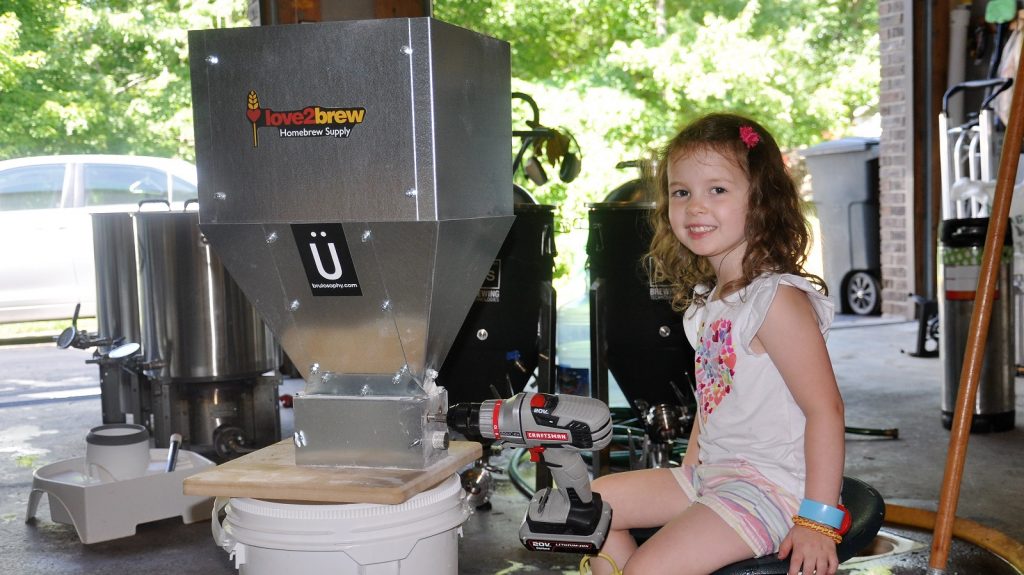
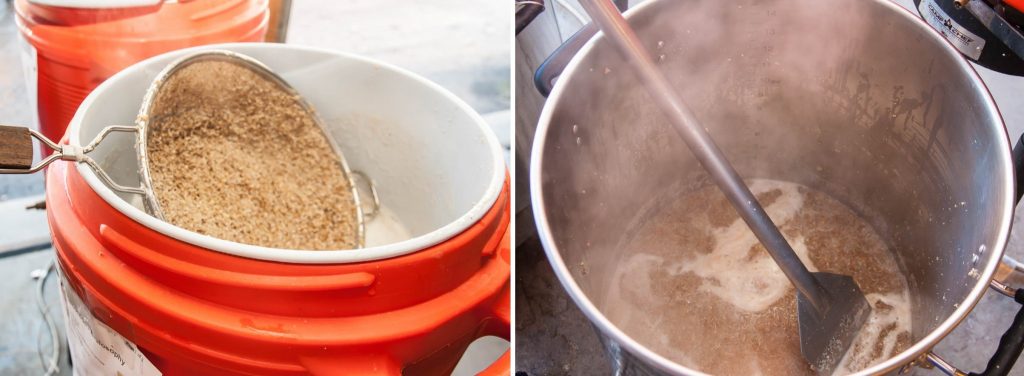
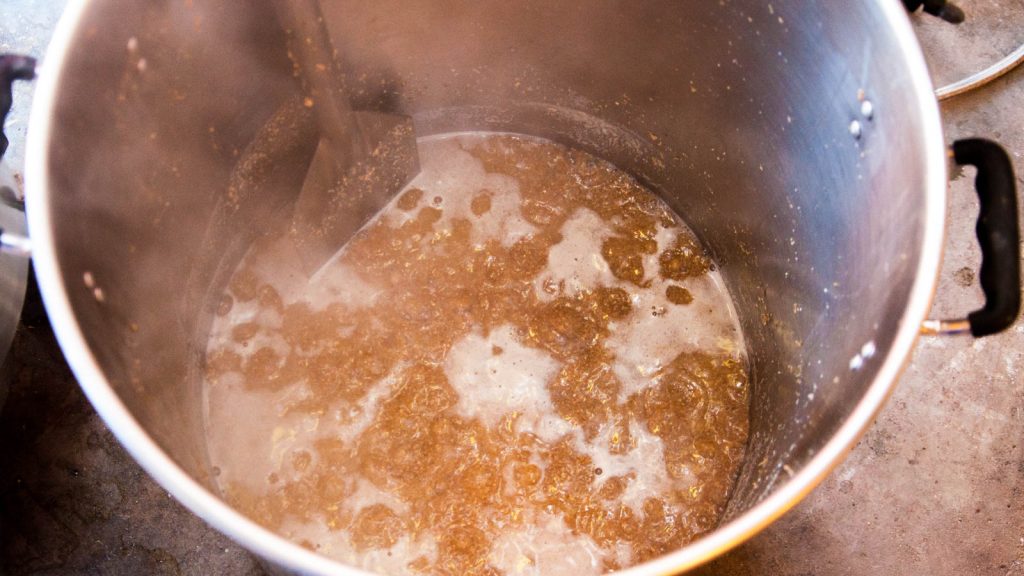
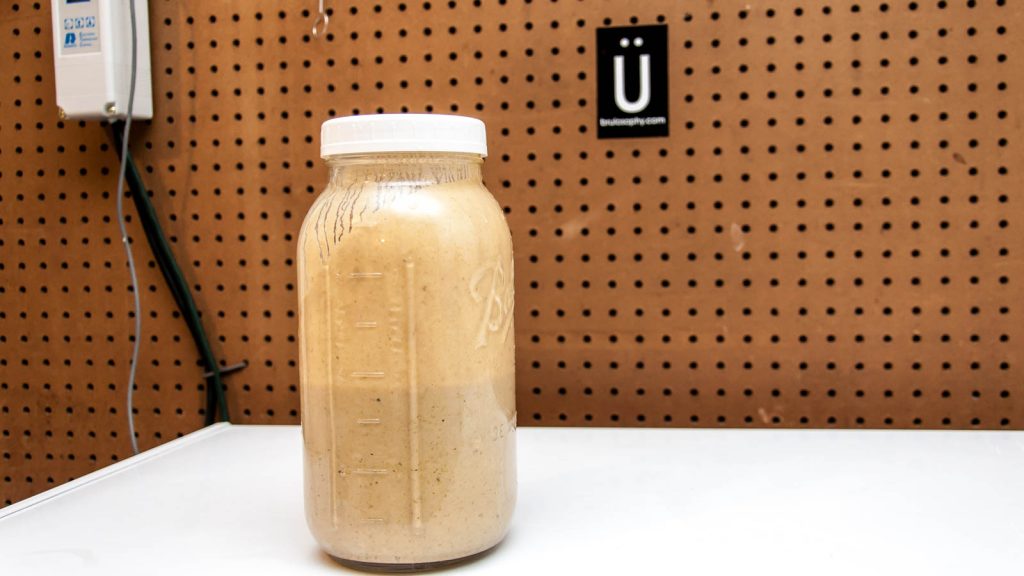






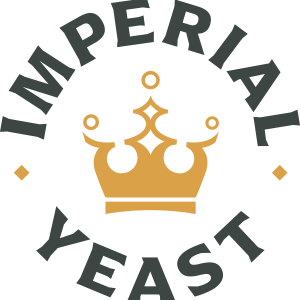

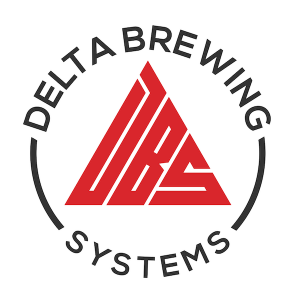

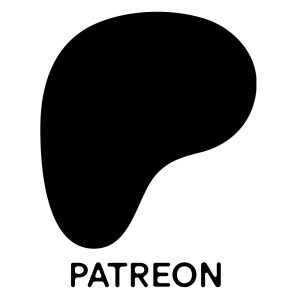
40 thoughts on “exBEERiment | Impact A Triple Decoction Mash Has On A German Pils”
This is one of the experiments where I am in no way surprised at the result. I did decoction for a bit myself and I couldn’t see any difference so I stopped.
Nice. Single data point for sure, but you have to admit kind of funny coming on the heals of Thursday’s essay.
Did you mean p=0.1 in the results?
Thought that was changed. Yea. P=0.1. I’ll check now.
Thank you, Todd.
Thank you, Thank you, Thank you! I just watched a series of 3 YouTube videos to learn how to do a decoction mash. I don’t think I will go there just yet.
I’ve done decoction a couple of times in the past, and while I did perceive a certain “something”, it was such a small background note that I just decided it wasn’t worth the extra time (that time could be better spent drinking a beer, or making a second beer). Neat to see this experiment though. I think my biggest take from it is at the end of the day make the beer you like, the way you like it.
I like your thinking about how the concentrated wort might have an effect on overall character. This brings up another question for me. Would boiling a portion of first runnings have the same effect as decocting? I have done this with beers to add more dextrin and sweetness into my beers. Isn’t that what a decoction mash is set to achieve? I think that this would be good to test. Mark me down as interested.
Cheers!
Kevin
I believe there are at least 2 or 3 main reasons for decoction and for achieving the “A certain… I do not know what”.
1) As a way to achieve the various temperatures steps. 2) Melanoidins from the boil. And maybe 3) A variety of “other” reactions which can be assumed (theory) to occur during the boiling steps.Volitile reductions. Coagulation or proteins and tannins…etc etc.
Perhaps my assumptions are misguided but in my experiences I have only discussed decoction mashing with others for the benefits of adding maltiness and sweetness. These are, after all, subjective tastes that the drinker is looking to for as opposed to differences in the brewing process/chemical reactions.
Also, great work, Malcolm. I look forward to reading through the latest articles that you and your guys put out. I can only imagine how much work is involved.
I’ve been looking forward to this analysis. I’ve been wanting to brew a doppelbock which I understand decoction is an essential process …but I wasn’t ready to take the time. This convinces me to pursue a recipe for a doppelbock that uses single infusion. Thanks again for your analysis!
Nice! I like the double-analysis for those who keep asking about whether you should know the variable or not before doing the test!
https://en.wikipedia.org/wiki/Melanoidin
https://en.wikipedia.org/wiki/Maillard_reaction
Given that Maillard reactions only start to take place from 140° C/280° F, how hard would your decoction need to boil to form them? Also, since the color of both beers is the same, this gives additional weight to the fact that decoction does not really add much (or any for that matter) color to the wort.
I have two use cases for myself to check the impact of decoction, a Leffe-clone which I use to test changes in the process and small changes in ingrediënts. I did this the first time with decoction. So the next time I do this, I will use the identical ingrediënts, but do only infusion mashing. And another one is a weissbier that I brew for the summer, which I also will do with infusion only next year.
Maillard reactions take place at lower temperatures than 140°C/280°F, they just take place faster at higher temperatures (read your wiki link a little closer, also http://cooking.stackexchange.com/a/29927)
Thanks for this link. I’m trying to perfect a Weihenstephaner clone. They double decoct. Perhaps the reason I’ve been unable to achieve their notable sweet doughy-toastiness is because I’m not decocting at a high enough temp. I wonder if there’s any way I may get the decoction to a higher temperature than 100C. I wonder if this is what Weihenstephaner does. I imagine if you boil under pressure, you can get the temperature higher.
I’m curious if boiling the decoction longer results in more significant differences. I just made a Dunkel using 100% Munich malt and only decoction induced maillard reactions for color. I boiled each decoction for 30 minutes prior to adding them back to the mash.
I also think that slight astringency from boiling the grain creates a slight “crispness” that is hard to achieve otherwise.
I would be fascinated to see this triangle test done with drinkers in different parts of the world. Would German drinkers be better able to detect the differences? Would they more readily prefer the decocted beer compared to their American counterparts?
Interesting thoughts.
Well played on the “under pressure” click bait. Well played indeed… totally got me, terrific song/collaboration. Love the xbmt!
Darn toot’n
What about the time difference between scales? Would there be a bigger difference in flavor between a decoction brew on a commercial scale than on a homebrew scale simply because of the time exposed to atmosphere, utilization, and/or higher/lower transfer temperatures?
I’m of the mindset that there will be no perceivable difference on a homebrew scale, but there could be something happening at the volume of something like a 20bbl system?
Could simply be that with modified grain there’s just no use in older, modified mash regimens.
Haha, point taken, but the link you gave gives more information about why there would be less Maillard reactions:
* ~212-300°F (100-150°C) – Maillard gets slower as temperature goes lower, generally requiring *many hours near the boiling point of water*
* ~130-212°F (55-100°C) – Maillard requires water, high protein, sugar, and *alkaline conditions to advance noticeably in a matter of hours*; generally can take days
For the decoctions, you boiled three parts each for 15 minutes, then the total wort another 70 minutes. Yet both beers seem to have the same color. This all points in the direction that the amount of browning/Maillard reactions (and thus formation of melanoidins) is rather negligible.
Well, the darkening reactions are purportedly reduced at lower pH and O2. And, per the body of the article, I diluted the decocted beer post sparge. It was slightly darker than the final implies but I believe much of it was from concentration of wort* (evaporation of water).
What are you using that predicts a FG of 1.017 for mashing German pilsner malt at 148F?
I have noticed this discrepancy a few times over the xbmts (low mash and lower than expected FG).
I did done a parallel decoction test, from 35C to mashout at 75C (three steps, about 90min in total and I boiled the hell out of the mash over that time to try to try to get a colour change) versus a single step infusion and got a 10% jump in efficiency to a check-those-numbers-again 90%. That meant they were easy to tell apart, but the colour was the same and there was not much different between the beers apart from the extra booze. Less head on the decoction as i remember.
This is what I have experienced as well. I used to get about 72 % efficiency when mashing hefeweizens stovetop and 85 % with decoction. I’ve also found decocted worts to attetunate further. After moving to a RIMS system I haven’t bothered with decoction as never noticed any differences except better efficiency and lower FG.
This past summer marked my first for lagering (Thank you diy gycol chiller) made a Helles and later a Marzen. I chose single decoction for both. I decided to do it for both; first to try it and secondly due to my process geekiness. All in all both beers turned out very good. The decoction step for me add a very easy way to raise mash from 153-157 to MO temp. Considering my time-a D brewday adds a buck twenty to my day (dough in-to dishes) …an ez price for doing something I love.
Prost!
One of my first beers was with a decoction and had a good head. But with modern malts you need to do the protein rest at 55°C/131° F, and not too long. This will mostly convert large proteins into small proteins, which is good for the foam head. The rest at 50°C/122° F will destroy the small proteins and be bad for the foam head.
That same beer had indeed also a better efficiency. It was meant to be one of 6.6% ABV, but it was finally 7.1%.
I decoct every hefeweizen and wit beer I make but I do agree 100% with your results. The difference, and I think I learned this from Warner’s book on German Wheat Beer, is the total amount of time dedicated to the decoction itself.
TIFWIW, I have found the only difference a decoction makes is if you do it for the long haul. For me, each separate decoction, regardless of the step, is 30 minutes at boil. For a 3 gallon batch, I pull a very dry 6-7 qts , mix it with 2 qts of hot RO and boil it. Each step, other than ferulic and mash out, gets a decoction.
My single infusion wheats taste like an American wheat while the intensively decocted wheats taste more “germanyish”.
Downside: Adds time to your brew day plus cost.
Should be most not all. Seems like all though.
At the end of the day boiling has an effect. Must be some effect to be had with the three hour boils you have in some historical recipes.
Makes me want to draw off some wort, boil it to syrup and cook it in my oven until it’s black (i.e. making the malt equivalent of dark candi sugar) and then seeing what happens. Would be fun to make a black pils SMaSH.
Could it be the malt? Malts available to the homebrewer are fairly well modified. Could it be that with well modified malt, there is not difference. A commercial brewer, such as Pilsner Urquell that uses decoction does not buy ‘off the shelf’ malt, but they have the grains malted to their exact specifications. Maybe someone travelling over there and visiting the brewery could swipe some of their malt for you, so that you could re-do this with their malt.
I wonder what the effects would be on a maltier style like vienna/marzen… is this your part 2?
Would 34/70 at 66 be a good yeast for this beer?
I personally enjoy that yeast fermented at 66F/19C, but some still swear it throws off esters. Try it out for yourself!
Lots of what I’ve read about brewing with decoction has to do with the generation of Maillard products like melanoidins.
What if that’s a product of larger decoction processes scorching some of the mash during the decoction process, achieving local mash temperatures exceeding 280F, and truly generating the compounds we think they’re generating? I wonder if that effect could be had using the mash baking methods found in Keptinis? Removing some of the mash and baking it in a 300F oven?
Just a thought…might be worth investigating.
has anyone tried doing the decoction with a pressure cooker instead?
I did this quite often as a homebrewer back in the late 90s early 2000’s. One caveat being that to avoid clogging the prv and gauge (and possibly exploding the pressure cooker [it was ancient]), I just did this with the first wort, and only up to 240f at 10-15 psi for about 30 minutes.
It was kinda my “gimmick” back then, equally questionable as to whether it really added anything to my beers.
Another older but timely (for me at least) Brulosophy case study. Going to brew a basic czech lager recipe this week, and struggled with whether or not to attempt at least a aingle decoction BIAB. Not going to bother. See how close i get with my recipe and do a single infusion.
Really do appreciate what is surely poineering – and eye opening – work in the field of home brewing. Brulosophy has been an invaluable asset in simplifying my overall process, and demistifying some of the folklore.
You surely must annoy some ardent proponents of classical process. I love it. Vive simplicity!
If you were to enter the a triple decoction beer in a BJCP certified competition, this might make the difference between winning “Best Of Show”, versus coming in at 3rd Place.
This was a fascinating result. Blind testers failed to have significant results while the brewer, Malcolm, was able to consistently pick the odd beer out. The differences he noted also happen to be what I perceive to be the differences between the great European lagers and similar beers brewed elsewhere. So, as many have said, the effect of decoction is subtle enough to be missed by most drinkers, but not so subtle as to be undetectable. With beers as simple and naked as most German and Czech lagers are, subtle differences can make the difference between a pleasant beer and a great one.